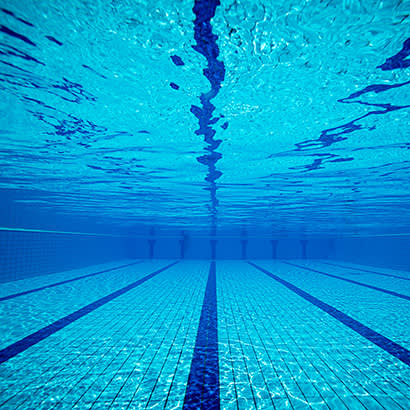
For an enhanced digital experience, read this story in the ezine.
Aquatics facilities around the country are looking for solutions to improve the quality of their pools. Ultraviolet disinfection systems and regenerative media filters are two readily available options to dramatically improve both pool operations and experience. However, some experts believe upfront costs and ongoing maintenance can create barriers for some park and recreation agencies. Additionally, environmental factors like phosphates, calcium hardness or low ultraviolet transmittance (UVT) can prove challenging for such products.
However, a new option — called electronic flocculation technology — can improve water clarity, minimize backwashes and save water. One municipality that is utilizing the technology realized a 79 percent reduction of turbidity and saved more than 197,000 gallons by effectively extending backwashes of one of its pools from every two days to every 10 days. Another municipality struggling with UVT levels as low as 81 percent implemented this technology and successfully improved UVT across all three bodies of water to an average of 98 percent.
What Is Electronic Flocculation?
Electronic flocculation is a chemical-free water treatment process. In aquatics, one manufacturer of the technology has had its patented system certified under the water conditioning subcategory of NSF 50. The technology also has been evaluated independently by the International Association of Plumbing and Mechanical Officials, with results that include a 36 percent reduction of combined chlorine and a 27 percent reduction of makeup water.
How It Works
The technology works by generating and transmitting a pulsed low-frequency electromagnetic field into and throughout a pool’s recirculation system. This treatment signal encourages both organic and inorganic particulate to form into larger particles that are more easily caught by the filter, providing a 24/7 flocculation effect regardless of flow rate, size of system or even filtration type.
A Case Study
A large municipality in Colorado evaluated electronic flocculation in early 2022. Looking for a solution to meet sustainability initiatives of water consumption and energy costs, the technology was presented as an easy-to-retrofit option to increase the efficiency of the municipality’s sand filters. The objective was to extend the timeframe between necessary backwashes while maintaining consistent flow rates and stable water-quality parameters.
“Because a large portion of the particles settle on top of the filter sand and were not blocking or decreasing flow as quickly, we were able to go longer between backwashes,” says Chris Hale, aquatic operation supervisor for City and County of Denver Parks and Recreation Department. “Wanting to continue to use sand filtration, the electronic flocculation technology helps my organization with meeting environmental green targets. Additionally, and this is huge, there is no maintenance required for the system.”
By the end of the evaluation, the operator successfully extended its backwashes by an average of 184 percent compared to its previous schedules, resulting in an 80 percent reduction of water consumption. Based on its experience, the city has since adopted the electronic flocculation technology into its standard specification.
Before committing to any one solution, always consult qualified experts to help you select the best option for fulfilling your aquatics facility needs.
Kevin Brauer is Director of Business Development at Clear-Flow.

